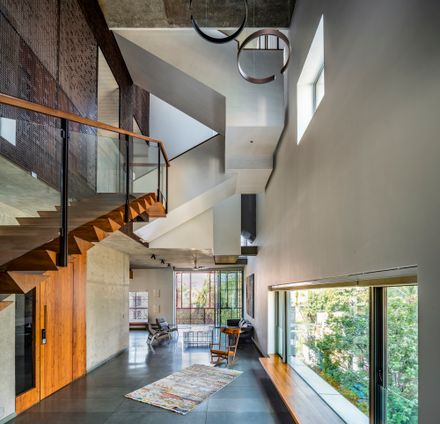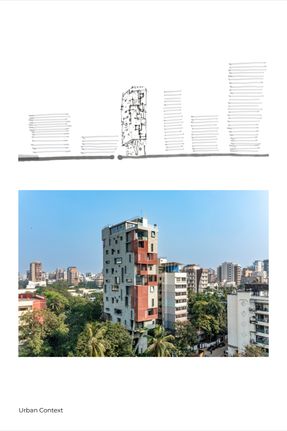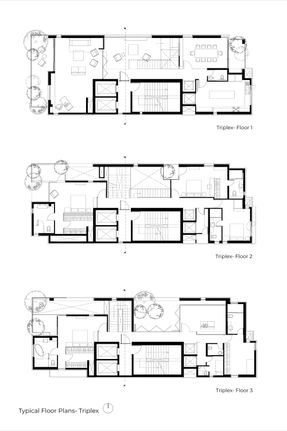ARCHITECTS
Malik Architecture
ENGINEERING
Semac, Global Engg. Services, Mr.vivek Garg
ELECTRICAL CONTRACTORS
Imperial Electricals
LEAD ARCHITECT
Jay Jani
PROJECT ARCHITECT
Rucha Pimprikar
FACADE CONTRACTORS
Destal India
HVAC CONTRACTORS
Clinton
DIRECTORS
Kamal Malik, Arjun Malik
YEAR
2024
LOCATION
Mumbai, India
CATEGORY
Houses
Text description provided by architect.
The streets of Khar used to be lined with low rise homes set back from the street and hidden behind trees and shallow front gardens.
Densification and the demand for floor space has transformed these neighbourhoods' into rows of tall structures battling for light and air and eliminating any manner of dialogue with the street, owing to the concentration of "decorative" multi-storey parking structures at the ground level.
The sea lies to the west of the site, a direction from which the harshest sun and rain originate. The individual "bungalows" are planned around central north facing courtyards with the public/private spaces located at the east and west zones to establish views into the funnels between the surrounding buildings.
The individual courtyards bind the internal spaces and allow for natural light and breezes to flow through the house, behaving, in the hot months, like a thermal stack.
Internal shifts in space and structure make the courtyard extend into the private spaces creating a network of deep voids and punctuated skylights. The sensation of living under the sky permeates through the house.
The western edge, with its views of the sea, and its propensity to be subjected to the maximum force of the elements is organized as a series of deep shaded verandahs with fixed and operable screens.
The Verandah spaces shift profiles within this tall void, based on the relationship with the interior, and each bungalow develops its own proportion of verandahs'.
The operable screens create privacy and shading making those spaces perennially habitable. Through the analysis and adaptation of vernacular devices a plausible solution to the urban impact of these rapidly proliferating building types seems possible.

































